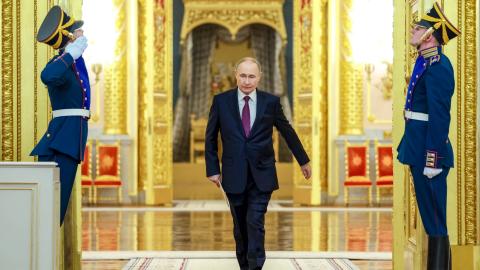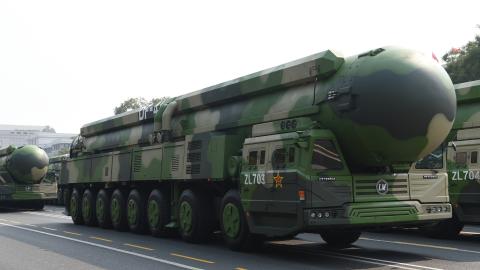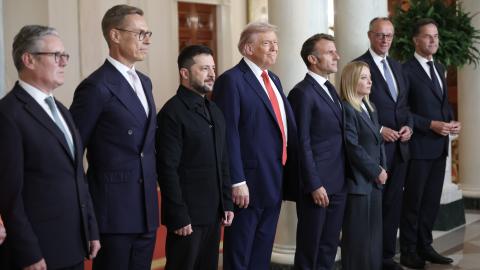Since 2002 the Euro has been the currency of some twenty diverse European countries. The Euro has the inherent problem that it serves countries with separate and different economies, and therefore Euro monetary policy, which has to be the same for the whole Euro region, will be right for some member countries and wrong for others. This is a problem Greece is having now. There are significant inherent disadvantages when fiscal and economic responsibility has different borders than monetary systems.
There is increasing belief that the European Union will not be able to control the economies of all the member countries enough so that European monetary policy will be adequate for all the member countries. And therefore the disadvantages of a common European currency may come to be seen as greater than the advantages. However there is great reluctance to give up the Euro as a common currency because of its role in expressing the unity of Europe.
This proposal for a “New Euro” is an idea designed to make it less difficult for Europeans to give up their common currency if they come to recognize the harm that it does. It would provide some of the psychological benefits of the common currency without the disadvantages. There is no chance that this idea will appeal to European leaders until they are nearly forced to give up the Euro.
The New Euro would be created by first authorizing each member country to create their own currency – as they had before the creation of the Euro.
In economic terms the New Euro would not be a real common currency. Its value would reflect the value of national currencies. Monetary policy would be in the hands of those controlling the separate national currencies. But the New Euro would allow individuals to conduct ordinary personal business with a single European currency and would symbolize the existence of a common Europe.
The New Euro would have two functions: (i) convenience of a common currency for travelers or for personal purchases in different countries; (ii) a symbol of the existence of Europe as a common society, not just a geographic region.
To create the New Euro the Eurosystem, the organization which now manages arrangements for the Euro, would be authorized to create a fixed number of New Euros, a number which is small compared to the total value of all the European national currencies. This amount could be changed from time to time; there is no desire to use the New Euro as a fixed value.
The New Euro would be a new currency, but it would not significantly affect the total European money supply. It would not be used to influence price level, monetary values or economic conditions.
The New Euro would be legal tender at least in all Eurozone countries, probably with a limit of perhaps 10,000 or 100,000 New Euros. That is, sellers would be required to accept payment in New Euros at the price they post (or perhaps at the current value of the New Euro in their national currency). Sellers would be required to list prices in both their national currency and in New Euros. So anybody traveling within Europe could travel with only one currency – the New Euro – and buy what she wanted in any country.
The Eurosystem would be required to buy and sell New Euros in all European currencies, with the responsibility to have enough New Euros in stock to satisfy all demand. That is, it would have to buy as many New Euros as people wanted to buy from them – raising the price if necessary to get enough, and lowering it when they had enough New Euros to meet demand. The price of the New Euro in each national currency would be whatever is necessary to meet demand for New Euros in each national currency, and for the Eurosystem to buy all New Euros offered for sale, paying in whatever currency the seller chooses. In effect the Eurosystem would make a market for the New Euro in each national currency in the same way a floor trader makes a market in a common stock.
The value of each national currency in other currencies would be determined by supply and demand in the currency markets, just as the value of the Euro, dollar, pound, and yen are determined today. These market prices for each currency would determine the value of money in each economy and the relative values between countries. The value of the New Euro would be derivative of the value of the national currencies, and there would be no attempt to control the value of the New Euro. (Like any other currency it would not have a single value, it would have a changing value in relation to each other currency.)
Non-Europeans could own and buy and sell New Euros, but it is not clear whether the Eurosystem should be required to make a market for New Euros in dollars, yen, pounds, or whatever. There probably would be a currency market in which people could buy or sell Euros with dollars or yen or whatever. But there would be no reason for currency traders to speculate in Euros instead of in the national currencies.
This doesn’t address the question of how purchases and sales of New Euros would be distributed. That is, the Eurosystem would have to have agents everywhere (perhaps banks) to buy and sell New Euros and local currencies on its behalf at the instantaneous price set by the Eurosystem.
The value of national currencies would be set by currency markets in which they are traded. The New Euro would not affect the value of national currencies. It would reflect currency values, not influence them.















